Name Marianne Cope | Beatified May 14, 2005 Major shrine Syracuse | |
 | ||
Venerated in Roman Catholic Church(Sisters of St. Francis of the Neumann Communities)Episcopal Church Feast January 23 (Roman Catholic Church)April 15 (Episcopal Church (United States)) Patronage Lepers, outcasts, those with HIV/AIDS, Hawaiʻi. Died August 9, 1918, Kalaupapa, Hawaii, United States Parents Barbara Witzenbacher, Peter Koob | ||
St marianne cope we have a saint
Marianne Cope , also known as Saint Marianne of Molokaʻi, (January 23, 1838 – August 9, 1918) was a German-born American nun who was a member of the Sisters of St Francis of Syracuse, New York, and administrator of its St. Joseph's Hospital in the city. Known also for her charitable works, in 1883 she relocated with six other Sisters to Hawaiʻi to care for persons suffering Hansen's Disease on the island of Molokaʻi and aid in developing the medical infrastructure in Hawaiʻi. Despite direct contact with the patients over many years, Cope did not contract the disease.
Contents
- St marianne cope we have a saint
- St marianne cope the woman who received a piano from robert louis stevenson
- Birth and vocation
- Call to Hawaii
- Molokai
- Death
- Legacy and honors
- Beatification
- Canonization
- Ecumenical veneration
- In arts and media
- References

In 2005, Cope was beatified by Pope Benedict XVI. Cope was declared a saint by the same pope on October 21, 2012, along with Kateri Tekakwitha, a 17th-century Native American. Cope is the 11th person in what is now the United States to be canonized by the Catholic Church.
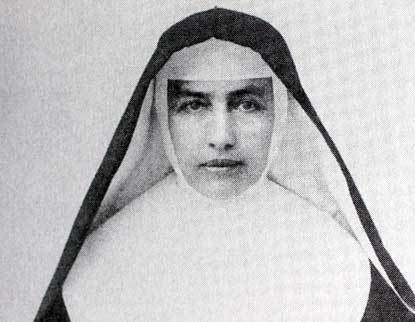
St marianne cope the woman who received a piano from robert louis stevenson
Birth and vocation
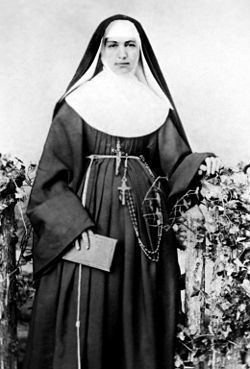
Cope was baptized Maria Anna Barbara Koob, later anglicizing her last name to "Cope". She was born January 23, 1838, in Heppenheim in the Grand Duchy of Hesse to Peter Koob (1787–1862) and Barbara Witzenbacher (1803–1872). The following year her family emigrated to the United States, settling in the industrial city of Utica, New York. They became members of the Parish of St Joseph, where Cope attended parish school. By the time she was in eighth grade, her father had become an invalid. As the oldest child, Cope left school to work in a textile factory to help support her family. Her father became naturalized as an American citizen, which at the time meant the entire family received automatic citizenship status.

By the time their father Peter Cope died in 1862, the younger children in the family were of age to support themselves, so Maria pursued her long-felt religious calling. She entered the novitiate of the Sisters of the Third Order Regular of Saint Francis in Syracuse, New York. After a year of formation, Cope received the religious habit of the Franciscan Sisters along with the new name Marianne. She became first a teacher and then a principal in newly established schools for the region's German-speaking immigrants. Following the revolutions of 1848, numerous German immigrants entered the United States.
By 1870, Cope had become a member of the governing council of her religious congregation. She helped found the first two Catholic hospitals in Central New York, with charters stipulating that medical care was to be provided to all, regardless of race or creed. She was appointed by the Superior General to govern St. Joseph's Hospital, the first public hospital in Syracuse, serving from 1870-77.
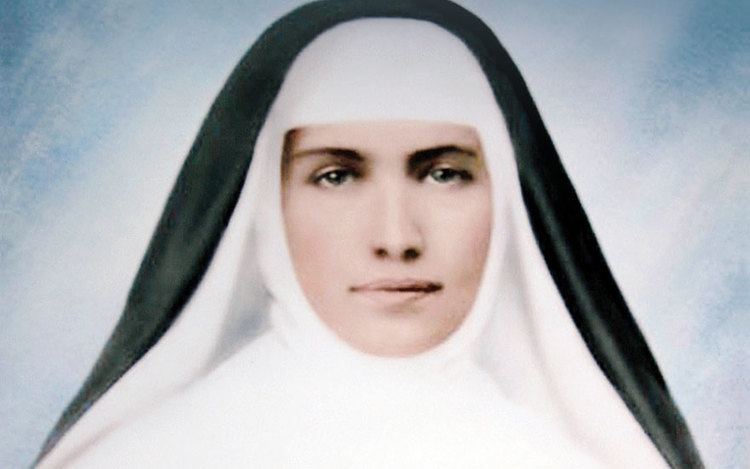
As hospital administrator, Cope became involved with the move of Geneva Medical College of Hobart College from Geneva, New York, to Syracuse, where it became the College of Medicine at Syracuse University. She contracted with the college to accept their students for treating patients in her hospital, to further their medical education. Her stipulation in the contract—again unique for the period—was the right of the patients to refuse care by the students. These experiences helped prepare her for the special ministry she next pursued.
Call to Hawaii
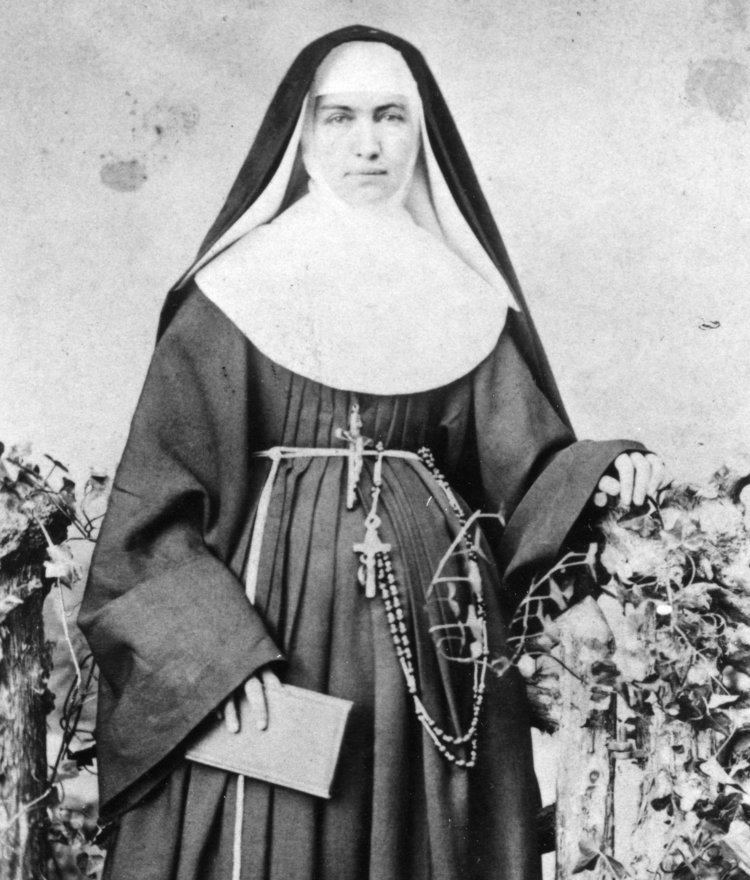
In 1883, Cope, by then Superior General of the congregation, received a plea for help from King Kalākaua of Hawaii to care for leprosy sufferers. More than 50 religious congregations had already declined his request for Sisters to do this, because leprosy was considered to be highly contagious. She responded enthusiastically to the letter:
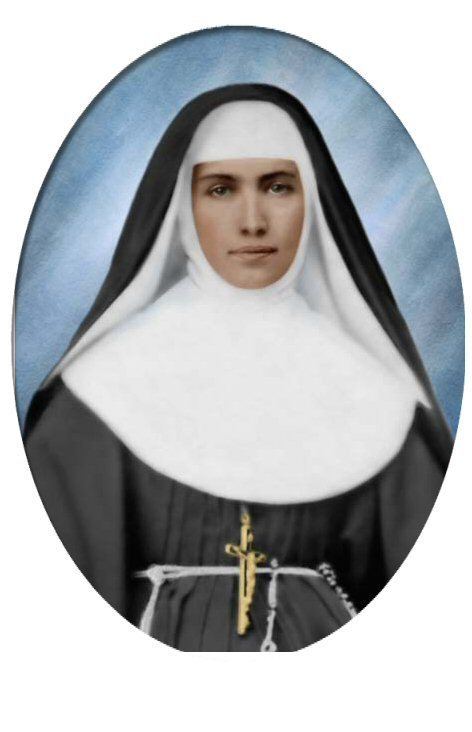
I am hungry for the work and I wish with all my heart to be one of the chosen Ones, whose privilege it will be, to sacrifice themselves for the salvation of the souls of the poor Islanders... I am not afraid of any disease, hence it would be my greatest delight even to minister to the abandoned ‘lepers.’
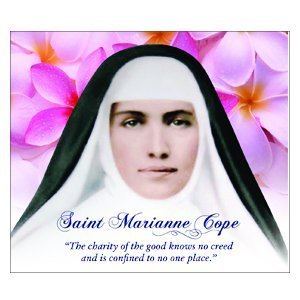
Cope departed from Syracuse with six other Sisters to travel to Honolulu to answer this call, arriving on November 8, 1883. They traveled on the SS Mariposa. With Mother Marianne as supervisor, the Sisters' task was to manage Kakaʻako Branch Hospital on Oʻahu, which served as a receiving station for Hansen's disease patients gathered from all over the islands. The more severe cases were processed and shipped to the island of Molokaʻi for confinement in the settlement at Kalawao, and then later at Kalaupapa.
The following year, at the request of the government, Cope set up Malulani Hospital, the first general hospital on the island of Maui. Soon, she was called back to the hospital in Oahu. She had to deal with a government-appointed administrator’s abuse of the leprosy patients at the Branch Hospital at Kakaako, an area adjoining Honolulu. She told the government that either the administrator had to be dismissed or the Sisters would return to Syracuse. She was given charge of the overcrowded hospital. Her return to Syracuse to re-assume governance of the congregation was delayed, as both the government and church authorities thought she was essential to the success of the mission.
Two years later, the king awarded Mother Marianne with the Cross of a Companion of the Royal Order of Kapiolani for her care of his people. The work continued to increase. In November 1885, Cope opened the Kapiolani Home with the support of the government, to provide shelter to homeless female children of leprosy patients. The home was located on the grounds of a leprosy hospital because only the Sisters were willing to care for children so closely associated to people suffering from leprosy.
In 1887, a new government came into office. It ended the forced exile of leprosy patients to Molokai and closed the specialty hospital in Oahu. A year later, the authorities pleaded with Cope to establish a new home for women and girls on the Kalaupapa peninsula of Molokai. She accepted the call, knowing that it might mean she would never return to New York. “We will cheerfully accept the work…” was her response.
Molokai
In November 1888, Cope moved to Kalaupapa. She cared for the dying Father Damien, SS.CC., who was already known internationally for his work in the leper colony, and began to take over his burdens. She had met him shortly after her arrival in Hawaii.
When Father Damien died on April 15, 1889, the government officially gave Cope charge for the care of the boys of Kalaupapa, in addition to her existing role in caring for the female residents of the colony. A prominent local businessman, Henry Perrine Baldwin, donated money for the new home. Mother Marianne and two assistants, Sister Leopoldina Burns and Sister Vincentia McCormick, opened and ran a new girls' school, which she named in Baldwin's honor. A community of Religious Brothers was sought to come and care for the boys. After the arrival of four Brothers of the Sacred Heart in 1895, Cope withdrew the Sisters to the Bishop Home for leprous women and girls. Joseph Dutton was given charge of Baldwin House by the government.
Death
Cope died on August 9, 1918, due to natural causes; she was buried on the grounds of the Bishop Home. In 2005, her remains were returned to Syracuse for reinterment at her mother house. In 2014, her remains were returned to Honolulu and are enshrined at the Cathedral Basilica of Our Lady of Peace.
Legacy and honors
The community which Cope founded on Molokai continues to minister to the few patients afflicted with Hansen Disease. The Franciscan Sisters work at several schools and minister to parishioners throughout the Hawaiian Islands.
Beatification
In 1993, Katherine Dehlia Mahoney was allegedly healed from multiple organ failure after praying to Marianne Cope for intercession. On December 20, 2004, after receiving the unanimous affirmation of the Congregation of the Causes of Saints, Pope John Paul II ordered a decree to be issued authenticating this recovery as a miracle to be attributed to the intercession of Mother Marianne. On May 14, 2005, Marianne was beatified in Vatican City by Pope Benedict XVI in his first beatification ceremony.
Over 100 followers from Hawaiʻi attended the beatification ceremony, along with 300 members of Cope's religious congregation in Syracuse. At the ceremony, presided over by Cardinal José Saraiva Martins, C.M.F., the Hawaiian song "Makalapua" (a favorite of Cope) was sung. Her feast day was established as January 23 and is celebrated by her own religious congregation, the Diocese of Honolulu, and the Diocese of Syracuse.
After the announcement by the Holy See of her impending beatification, during January 2005, Blessed Marianne's remains were moved to the motherhouse of the congregation in Syracuse. A temporary shrine was established to honor her. By 2009, the erection of a marble sarcophagus in the mother house chapel was complete. Her remains were interred in the new shrine on her feast day of January 23.
In 2007, a statue of her was erected at St Joseph's Church in her native Utica, whose parish school she had attended in her childhood.
Canonization
On December 6, 2011, the Congregation for the Causes of Saints found that a second miracle could also be attributed to the intercession of Blessed Marianne. This finding was forwarded to Pope Benedict XVI by its Secretary, Cardinal Angelo Amato, for papal approval. On December 19, 2011, Pope Benedict signed and approved the promulgation of the decree for Marianne's sainthood and she was canonized on October 21, 2012; a relic was carried to Honolulu from her mother church.
After Father Damien, Cope is the second person to be canonized who had served in the Hawaiian Islands. She was both the first Beatification and the last Canonisation under Pope Benedict XVI. In 2014, the church announced that the remains of Saint Marianne would be re-interred at the Cathedral of Our Lady of Peace in Honolulu, which was undergoing an extensive renovation. This is a more convenient location for the faithful than the Kalaupapa National Historical Park on Molokaʻi, where access is primarily by plane or mule train. She sometimes attended Mass at the Cathedral and it was where Father Damien was ordained. The Franciscan Convent in New York which held her remains has had to move to a new location because its former buildings needed extensive repairs.
Ecumenical veneration
Cope is honored jointly with Saint Damien of Moloka'i on the liturgical calendar of the Episcopal Church (USA). Their shared feast day is celebrated on April 15.
In arts and media
Paul Cox directed the film Molokai: The Story of Father Damien (1999). Mother Marianne was portrayed by South African actress Alice Krige. Father Damien was portrayed by David Wenham.
